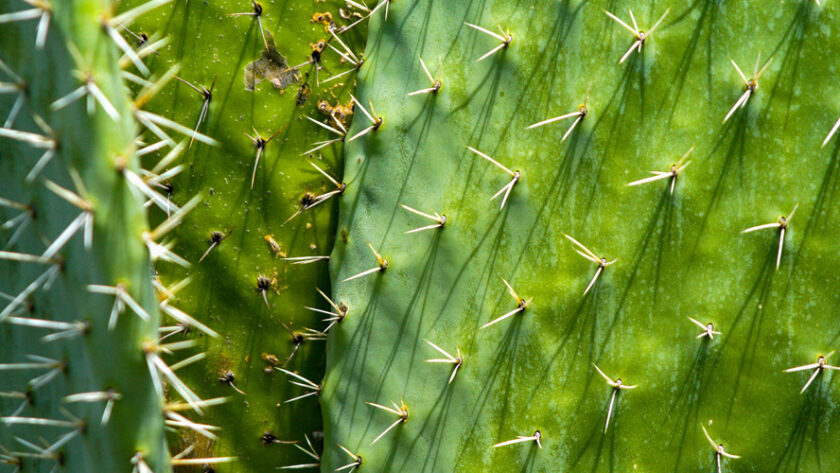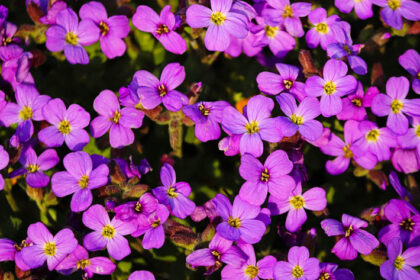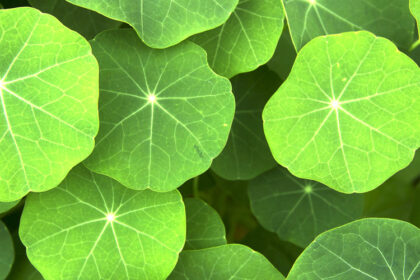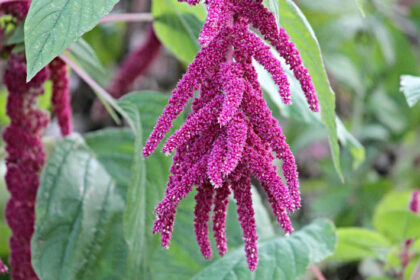If you want to know the most famous plants with thorns, follow this article, and you will find out.
Thorns are hard, rigid extensions or modifications of leaves, roots, stems, or buds with sharp, stiff ends and generally serve the same function: physically deterring animals from eating the plant material.
Next, we will present ten species of plants that have thorns:
- Agave
- Holly
- Bougainvillea
- Crown of thorns
- Natal plum
- Oregon grape
- Solanum pyracanthos
- Honey locust
- Prickly pear
- Hawthorn
- Agave

Agaves are species of very voluminous plants that are sure to catch your eye if you can see them, native to the warm and arid regions of America. But some species are native to the tropics of South America.
Agaves are far from spectacular plants, but we must be cautious if we want to plant them in our garden because they have thorns on the edges and top of the leaves that make up the plant.
Agave is a succulent plant that consists of a rosette of leaves that can grow up to 2.5 meters in height.
We can have this plant right in our garden, offering a central point to our garden. When it comes to planting, we need to keep in mind; it is to leave enough space around it to move around without worrying that we will sting.
The colors that agave can have are also fascinating, from pale green to a gray-blue, and striped or mottled.
Agaves are also used to prepare alcoholic beverages, such as mezcal liqueurs, but I believe that the most famous drink in the world is tequila, which is obtained from blue agaves.
In addition to their use in tequila production, blue agave is the primary source from which agave nectar syrup is extracted.
Their lifespan is quite long, and they are part of the monocarpic family, which means that each agave after it blooms and bears fruit is practically the end of life.
Agave is not a sophisticated plant in terms of development. For healthy growth, agave needs good soil drainage and plenty of light.
2. Holly

Holly is a genus of some 600 species of shrubs and trees in the family Aquifoliaceae, distributed nearly worldwide, according to Britannica.
Holly is an ornamental plant that beautifies our gardens even in cold seasons when everything seems to have no life. This thorny plant falls very well in the category of a hedge that can be an ecological barrier against intruders that may occur who will not have the courage to cross the barrier because of his thorns.
This plant’s foliage can have both small leaves and large, thorny leaves.
The fruits that holly produces are represented by some buds that can also have several colors: red, blue, orange, pink, white.
When it comes to holly pollination, one thing to remember is that when we buy this plant, we need to take at least one male and one female plant because the male plant helps the female plant pollinate, thus producing berries.
There are several holly soybeans, the most famous being the one called ‘Merry Christmas,’ with glossy dark green leaves and red fruits. Most varieties prefer well-drained soil with a certain acidity level regarding their cultivation.
3. Bougainvillea

Another plant that has thorns is Bougainvillea. Bougainvillea is a genus of thorny ornamental vines, bushes, and trees belonging to the four o’clock family, Nyctaginaceae.
Bougainvillea is one of those climbing plants that takes your breath away when you see it. You can’t resist capturing the beauty of this flower in a photo gallery whenever you have the opportunity.
It has an extraordinary variety of colors to beautify our gardens and be the main attraction.
This plant prefers warm climate regions to grow freely. Interestingly, this flower is that what we see color in it is not the flowers but the leaves, the flowers being white and very small; colored leaves surround them.
We can plant it in the garden without pots to take advantage of it in a warm little area.
In terms of its care, it is not a pretentious plant. As I said, it prefers warmer climates that do not require much water to withstand drier periods. The most important thing for bougainvillea is the light, which must be in abundance.
Be very careful when we want to take a picture with this wonder so that we don’t get too close to avoid getting hurt by its thorns.
4. Crown of thorns

According to Britannica, the Crown of thorns, also called Christ thorn, is a thorny plant of the spurge family (Euphorbiaceae), native to Madagascar.
The Crown of thorns is part of the succulent family with thick, green leaves. We often see this plant inside houses, and it can bloom even year-round if it is cared for properly.
The flowers are not the petals that we see colored, but they are green and tiny. They are located at the base of the colored petals.
After its name, we practically realize that it is a plant with thorns, these thorns forming the stem of the flower.
It, if planted outdoors, grows in the form of a shrub and can reach 3-6 feet in height.
As for the care of this plant, it is succulent, must water it less often, and all the time, before watering, we must check the soil moisture. We constantly water the plant by flooding the pot with water. It is also very fond of the sun.
There is a myth about the Crown of thorns. It is said that Jesus Christ wore when he has crucified a crown made of thorns that came from the stem of the Crown of thorns.
5. Natal plum

Natal plum is a shrub native to tropical and southern Africa.
This shrub can be planted for decorative purposes as a hedge if we want to delimit certain areas of the garden but also for the red and small fruits, similar to the cranberries it produces.
As for planting them, we must be careful where we place them. Preferably in places less accessible to children or animals to avoid injury due to this shrub’s thick thorns.
This thorny plant also poses a danger because all parts of the plant are poisonous, except ripe fruit.
The wonderful smell of natal plum flowers will make us plant such a shrub.
If we want this shrub, we have to plant it in a sunny place, with well-drained soil, and weekly or even monthly watering, depending on the weather.
6. Oregon grape

The Oregon grape or holly-leaved barberry is a species of flowering plant in the family Berberidaceae, native to western North America.
If we were talking about plants that prefer sunny places, look, there are plants like Oregon grape that prefer shade places in the garden.
Why plant this shrub? Because we will enjoy its colors in all seasons.
It is planted in autumn, and in the spring, we will have an explosion of yellow color and perfume in our garden, which we will enjoy, as well as the birds and insects that will take care to pollinate.
After the flowers pass, the fruits are formed, which are small and have a dark albatross color, which is edible.
Oregon harrows need moist, acidic soil, shade, weekly watering to grow harmoniously.
Due to the thorny leaves, planting these shrubs can be a good way to keep unwanted visitors in the garden.
7. Solanum pyracanthos

If all the other planets didn’t show much interest, they would surely catch your eye.
Solanum pyracanthos, also known as the porcupine tomato, is an evergreen shrub native to tropical Madagascar and the islands of the western Indian Ocean. It belongs to the genus.
Solanum is a diverse and cosmopolitan genus with over 1,500 species, including the tomato, potato, and nightshades.
The more common its shape, the more interesting it seems to study; not in vain is it called the devil’s thorn.
The most substantial part of this plant is the leaves with a gray to green color, full of bright orange thorns and the flowers are purple.
To the surprise of many, this plant has many similarities with tomatoes, but beware that both leaves, flowers, and fruits are poisonous.
It should be protected from frost and prefer sun or partial shade and well-drained soil.
This plant’s thorns may seem terrifying, but it may be a defense mechanism against those who would like to touch it for the plant.
8. Honey locust

The honey locust, also known as the thorny locust or thorny honey locust, is a deciduous tree in the family Fabaceae, native to central North America, mainly found in the moist soil of river valleys.
If you want perfume in your spring garden, do not hesitate to plant a honey locust tree. You will certainly not regret it. Even if it has thorns on the stem, it has a significant advantage: its leaves, a form in which light can penetrate to plant other plants at its base.
The flowers of the tree are small and not very visible, and the fruits are formed in the form of a long, brown pod.
It grows well in humid conditions but can be drought resistant and loves full sun.
Given that we are facing more and more pollution, we would do well to plant more trees, such as honey locust that copes well with urban conditions, to breathe a long time from now on.
9. Prickly pear

Prickly pear, also called nopal, is one of several species of flat-stemmed thorny cacti in the genus Opuntia (family Cactaceae) and their edible fruits. Prickly pear cacti come from the western hemisphere, according to Britannica.
If we encounter this plant species, we must be cautious with thorns and tufts of barbed bristles because they can cause allergic reactions if we touch them.
This plant is edible with both pads, flowers, and fruits but must take great care to clean those thorns very well. You can cook many dishes from this plant, from salads to tacos, cooked with egg.
It belongs to the cactus family, so it is mainly found in the desert, so it loves light and is resistant to drought.
Interestingly, this cactus can also produce cochineal dye, which is due to an insect that feeds on prickly pear.
10. Hawthorn

Hawthorn (genus Crataegus), also called thornapple, is a large genus of thorny shrubs or small trees in the rose family (Rosaceae), native to the northern temperate zone, according to Britannica.
If we live in an area of pastures, plains, where there are animals that graze grass, and we do not want to invade our territory, the solution is to plant hawthorn shrubs that are a hedge fence.
It is planted in autumn or spring loves sun exposure, leading to a rich flowering. Watering will be done if there are extended periods of drought.
The fruits it produces are edible and can make jellies or jams.





